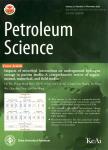Separation and Characterization of Nitrogen-Rich Components in Coker Gas Oils from Athabasca Bitumen
Athabasca 油砂沥青焦化蜡油中富氮组分的分离与表征(英文)作者机构:石油大学重质油国家重点实验室中国北京昌平102200 加拿大国家研究院化工过程与环境技术研究所 加拿大合成油公司埃德蒙顿研究中心
出 版 物:《Petroleum Science》 (石油科学(英文版))
年 卷 期:2004年第1卷第3期
页 面:72-77页
核心收录:
学科分类:081705[工学-工业催化] 08[工学] 0817[工学-化学工程与技术]
主 题:Coker gas oil pentane insoluble hexane insoluble separation characterization
摘 要:It is well known that gas oils from oilsands bitumen are difficult to hydrotreat. In order to develop the most appropriate flow sheet and operating conditions, a thorough knowledge of the molecular structure and behaviour of bitumen and its gas oil products is needed. In this work, the gas oil samples are fractionated in an attempt to isolate and identify the problematic molecular species for hydrotreating. It is found that the major nitrogen sources in coker gas oils are associated with relatively small pentane insoluble species and an even smaller, highly polar, hexane insoluble species. Structural information obtained for these fractions indicates that they are formed during the cracking of resin molecules. Nitrogen speciation shows that the pyrroles are the primary nitrogen type, with pyridines also being an important species. Both nitrogen species are undesirable in the hydrotreating process. Pyrroles in particular are subject to polymerisation, producing gums and sediments that foul filters and other equipment while pyridines can directly deactivate the hydrotreating catalyst.




